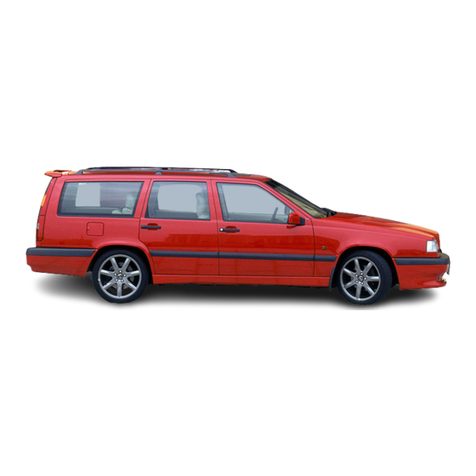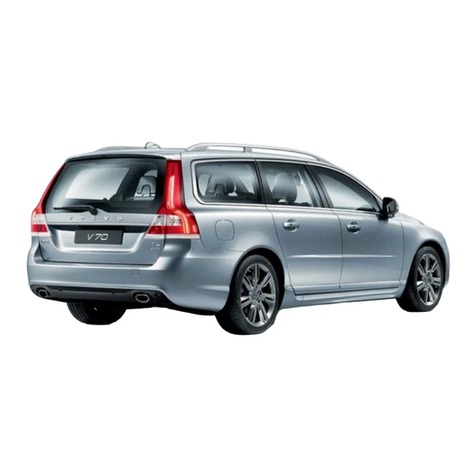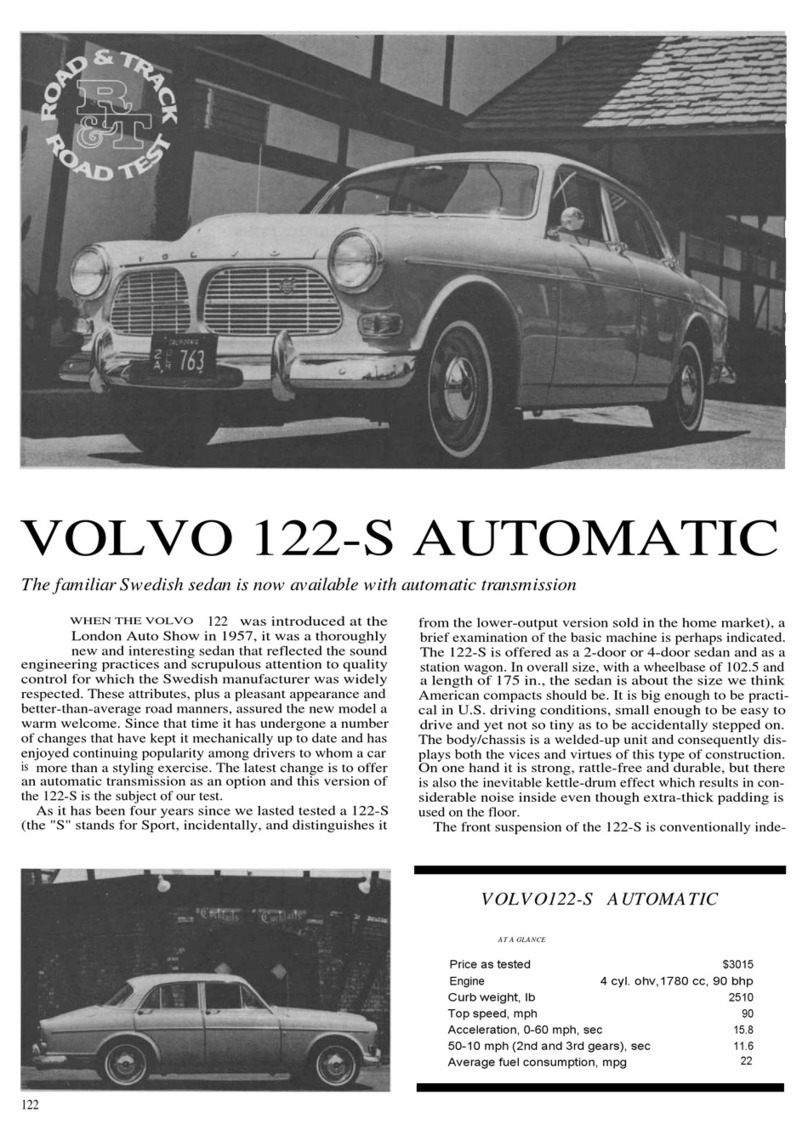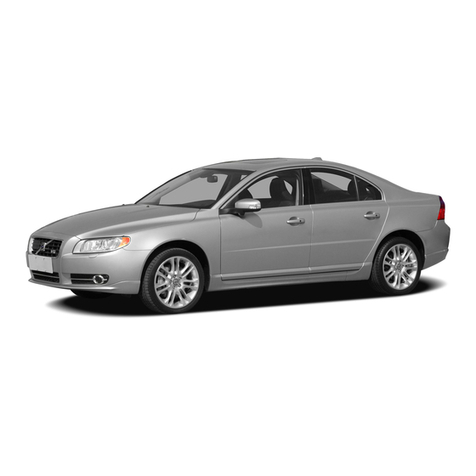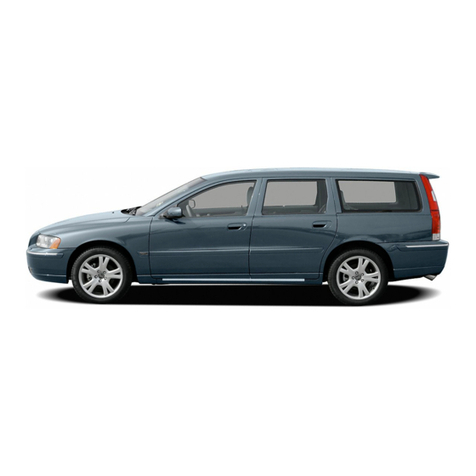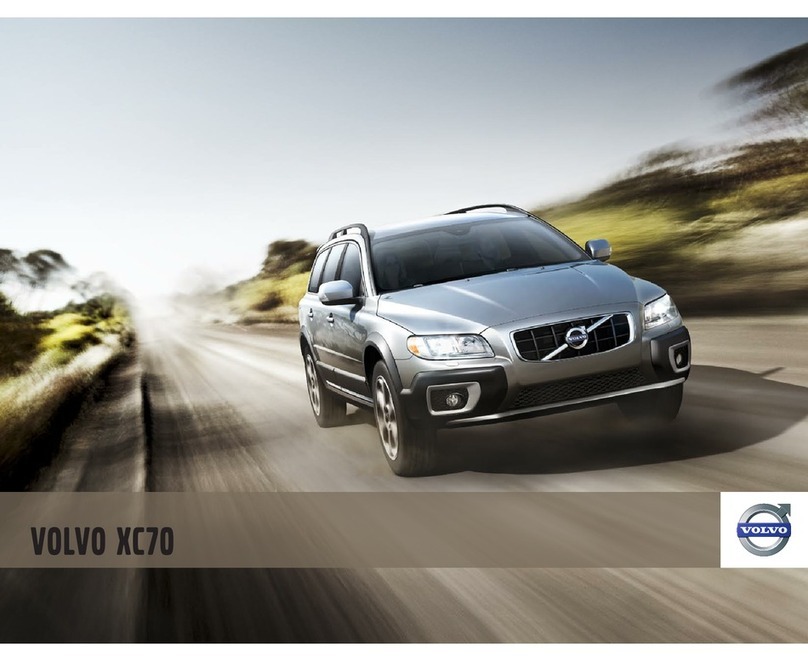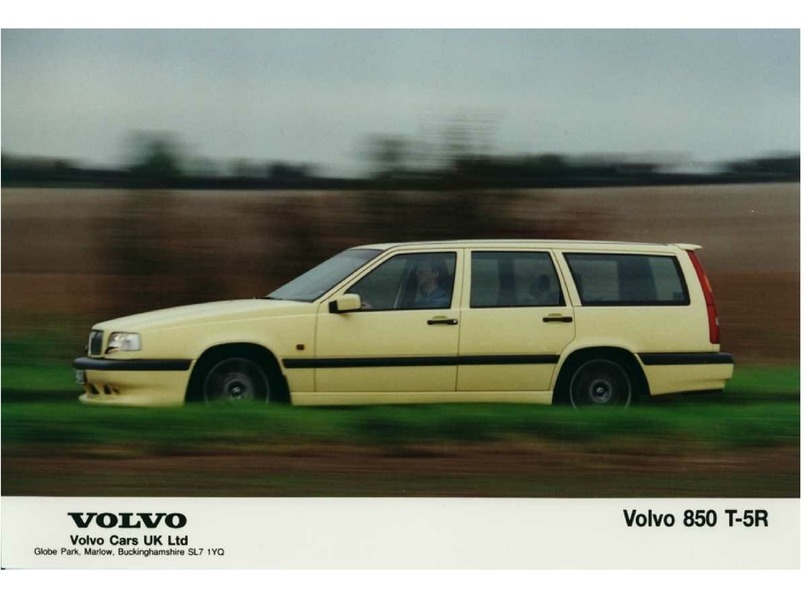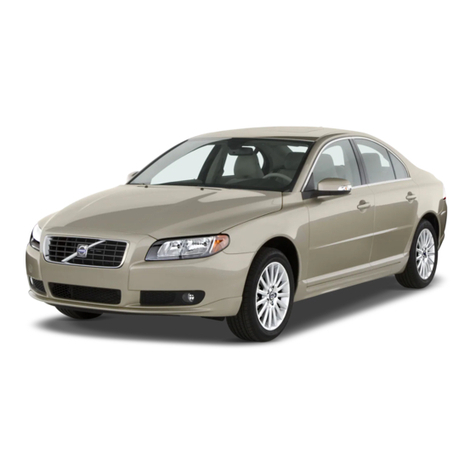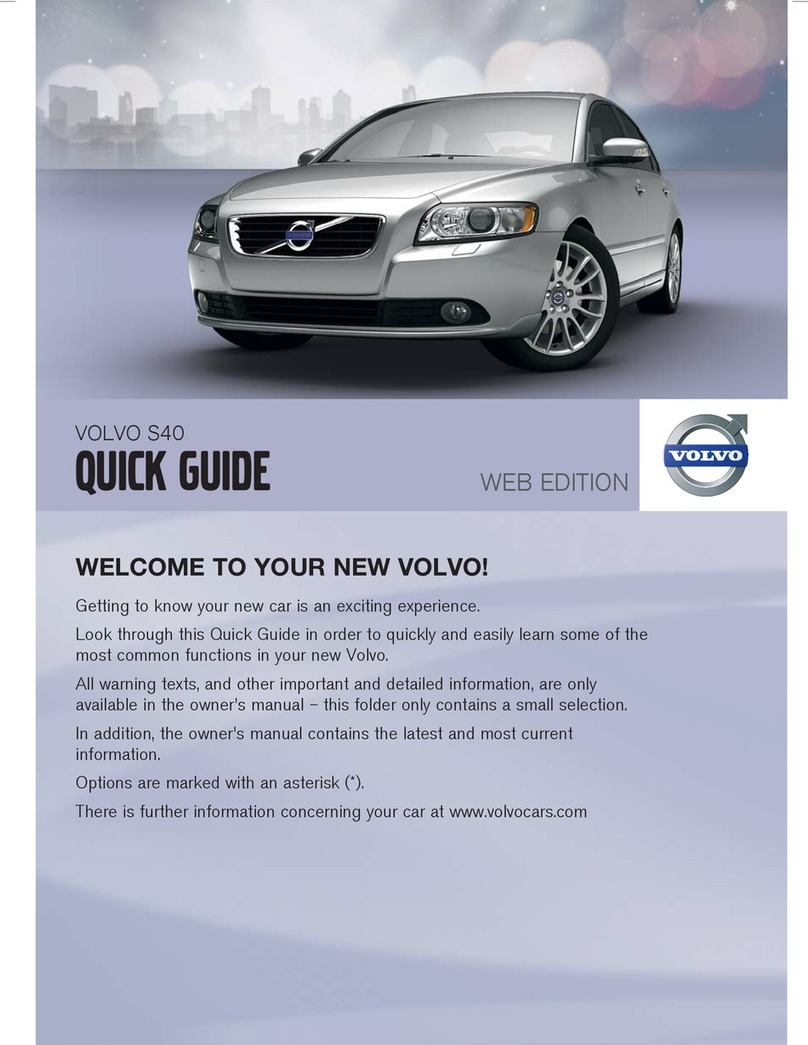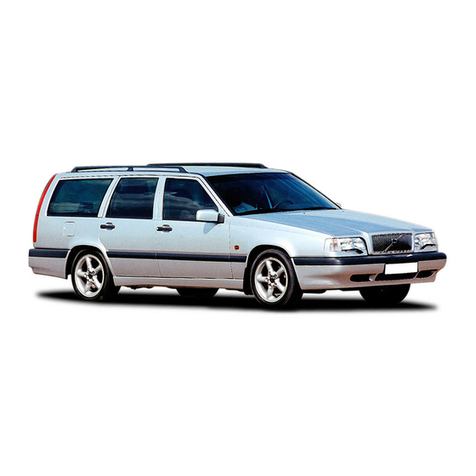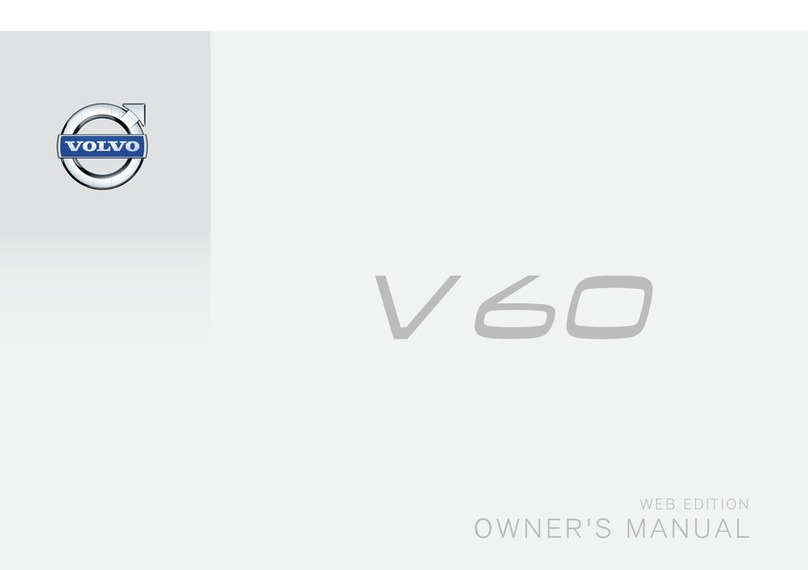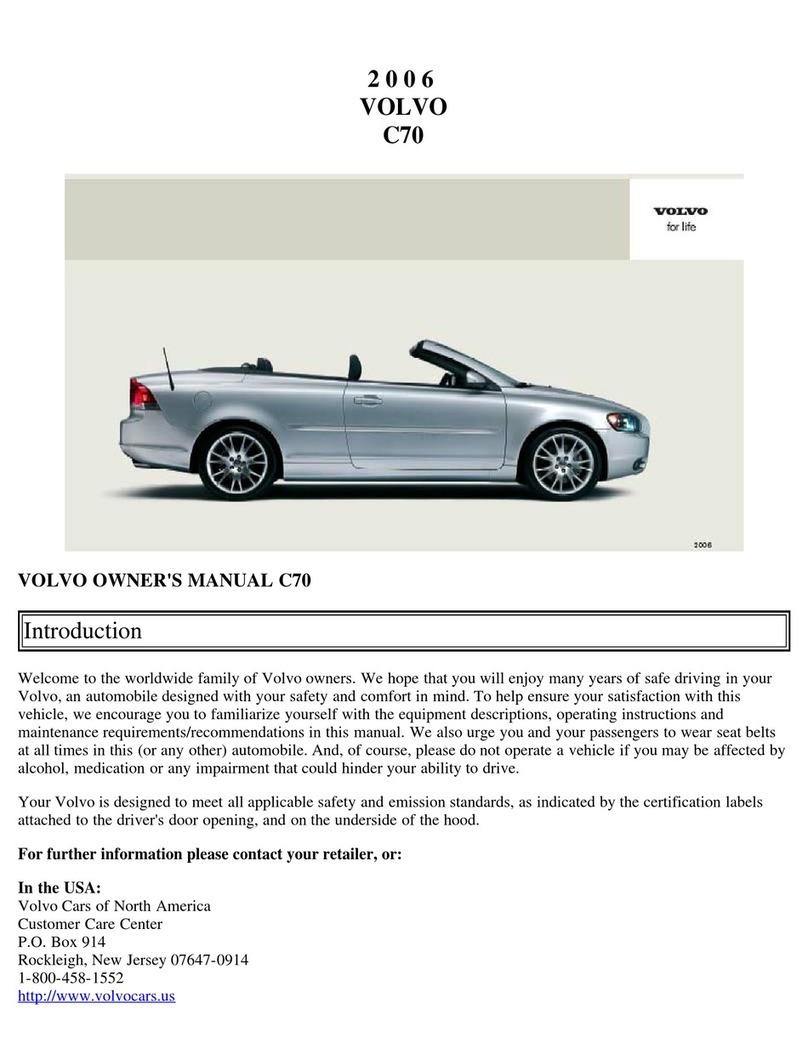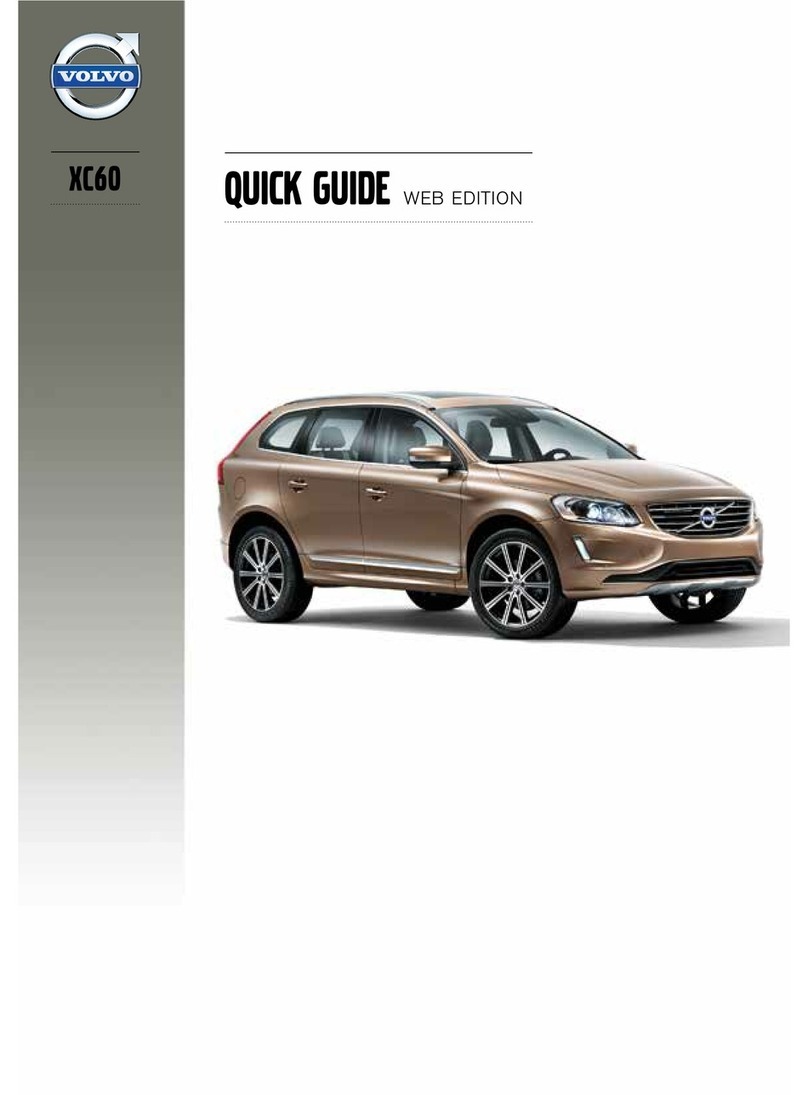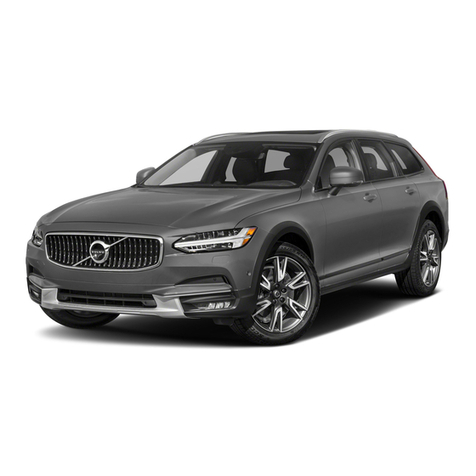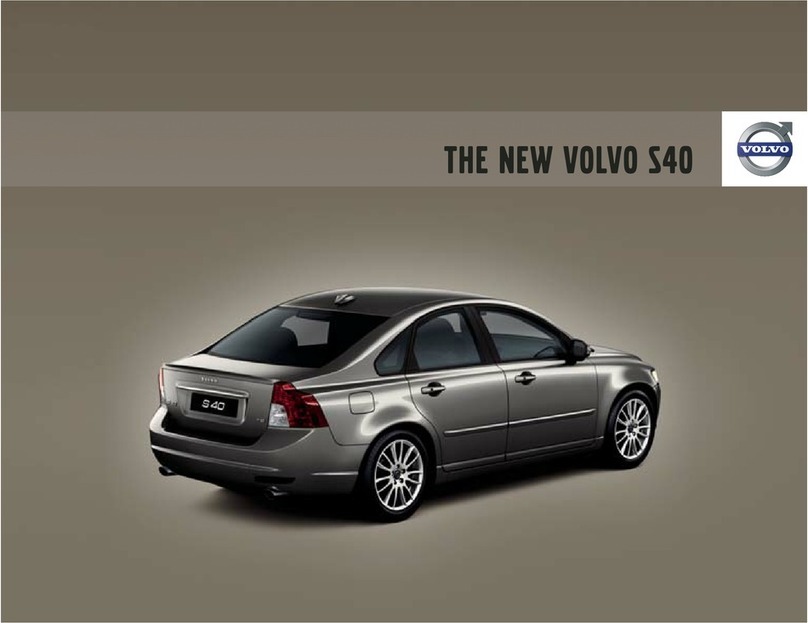Because nobody likes pollution
but everybody likes to drive.
Thirty years ago the CEO of Volvo said, “Our cars produce pollution, noise
and waste.” This truth inspired us to do more than just make cars safer to
be in. Starting with innovations like the three-way catalytic converter with
a Lambda sensor to today’s seven new eco-designated DRIVe models,
our goal at Volvo is crystal clear: to build cars that leave a minimal impact
on the environment. DRIVe captures all our environmental work, from
production to recycling, and represents our commitment and continued
efforts for sustainable mobility.
Today’s DRIVe models are equipped with state-of-the art diesel engines
optimised to reduce fossil fuel-based CO2emissions. In addition, some
DRIVe models are equipped with Start/Stop technology that allows the
engine to switch off when the car is at a standstill, saving even more fuel.
Thankfully, the imperative to make our cars more earth-friendly has inspired
innovations that make these DRIVe cars even more rewarding to drive.
Our corporate responsibility
At Volvo Cars, our overriding objective is to balance the needs of our
company, our customers, society and future generations in a sustainable
way. To find out more, please visit www.volvocars.com/sustainability
10
Motion
We must minimise the emissions of fossil CO2(which leads to climate change) and
increase the energy efficiency of our cars. Continuous improvements within
aerodynamics, rolling resistance, lightweight materials and drivetrain technology
help us lower fuel consumption. To significantly reduce fossil CO2emissions, we
offer many DRIVe turbodiesel variants with lower CO2emissions. We have also
introduced Powershift, a new fuel-saving dual-clutch automatic transmission
technology. In our new Hybrid technology centre in Göteborg, we develop the
next generation power trains for future Volvos. The goal is that we use hybrid
technology in all of our car models.
Inside
We know that more and more people are suffering from asthma and allergies.
To ensure a healthy interior for you and your passengers, we test upholsteries and
interiors in the Volvo Environmental Laboratory in Sweden. All upholstery
materials and interior textiles also comply with Oeko-Tex Standard 100,
an international benchmark for human ecological safety of textiles. All leathers
are chromium-free, they’re tanned using vegetable or synthetic substances
instead of chromium. And to meet high requirements on an allergy-friendly interior,
we’ve developed the Clean Zone Interior Package (CZ IP) together with the
Swedish Asthma and Allergy Association. What’s more, some panel trims are
Forest Stewardship Council (FSC) certified to ensure the wood comes
from responsibly managed forests.
Lifecycle
Already from the early stages of conception we’ve, considered our cars’ environmental
impact: from design and manufacturing to useful life and recycling. For example,
we’ve seen to it that our factories are powered by electricity produced by wind and
hydro power and use energy and water responsibly. Our production facilities are
certified under the global environmental standard ISO 14001, and we make
sure that all our major suppliers meet our strict environmental standards. At the
end of its useful life, every Volvo is designed to be 85% recyclable. We also offer
re-manufactured exchange parts which substantially reduces the need for raw
materials and energy.
Please note: Some of the environmental technologies are only available on certain Volvo models
and may be optional. For more information, talk to your Volvo dealer or visit www.volvocars.co.uk
